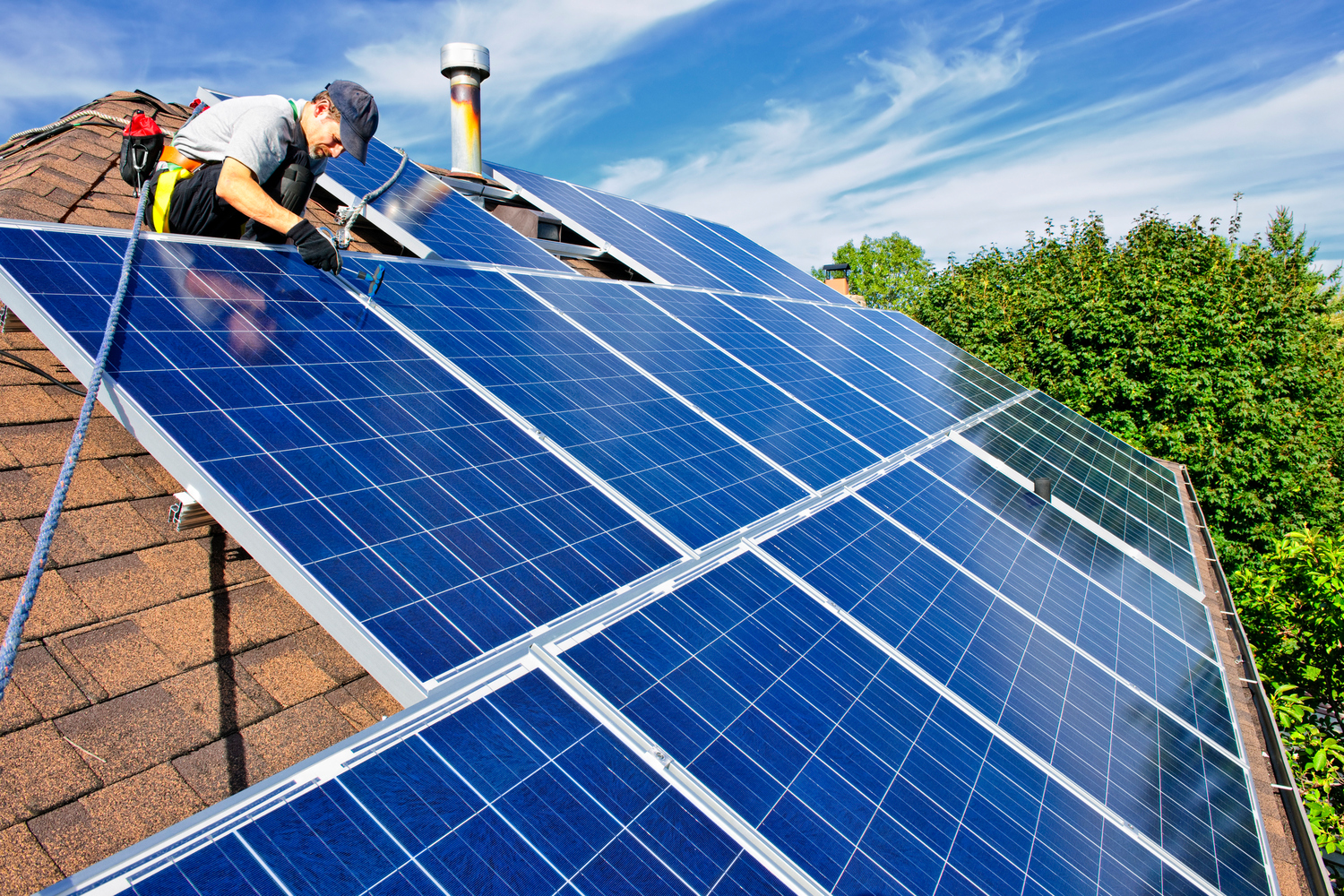Reducing GHG Emissions
Addressing Refrigerant Leaks
Refrigerant leaks, which account for 3% of Howard County’s emissions, can be a significant contributor to climate change, as these chemicals typically have high global warming potentials (GWPs). Currently, most equipment uses hydrofluorocarbons (HFCs) as a refrigerant, which can be more than 10,000 times as potent a greenhouse gas as CO2.
These emissions occur as the charge in refrigeration and air conditioning (AC) equipment—such as window AC or commercial retail refrigeration units—leaks, either through operations, maintenance, or improper disposal of the refrigerant.
Efficient Energy Use
Efficiency Retrofits
Howard County is focused on increasing energy efficiency and conservation in all existing residential commercial and government buildings. Education on existing programs, funding opportunities, and co-benefits of energy efficiency and conservation can help increase adoption of energy saving measures in homes and businesses.
Residential energy efficiency measures may include weatherization, lighting upgrades, insulation, air sealing, upgrades to more efficient appliances and HVAC equipment, and occupant behavior changes. Commercial measures may include lighting retrofits, more efficient HVAC equipment, building envelope improvements, retro-commissioning, and building automation, as well as occupant education and behavior change.
Efficient Energy Use
Electrification Upgrades
Building electrification means replacing boilers, hot water heaters, and other equipment that burn fossil fuels (natural gas, heating oil, etc.) to high-efficiency equipment that runs on electricity, such as cold weather heat pumps or heat pump water heaters. Paired with grid decarbonization, electrification can significantly reduce emissions from buildings.
Electrification reduces greenhouse gas emissions, improves building performance, reduces energy costs, and improves indoor air quality. Replacing gas stoves with electric alternatives significantly improves indoor air quality and human health.
Efficient Energy Use
Leading by Example: LEED Certification
New County government buildings greater than 10,000 square feet are required to achieve LEED Silver Certification to maximize efficiency and reduce the environmental impact of new construction, and in many cases, Howard County has achieved LEED Gold or LEED Platinum for new buildings. For example, the Howard County Circuit Courthouse, completed in 2021, achieved LEED Gold with many points achieved for energy efficiency and renewable energy.
In August 2022, Howard County became the first county in the U.S. to obtain the LEED Platinum certification in the current Cities and Communities Program!
Efficient Energy Use
Leading by Example: Retro Commissioning
Howard County has received grants and rebates to “retro commission” seven buildings. Retro commissioning involves building "tune ups" that will maximize energy efficiency and cost savings. "Tune-ups" include making sure heating and cooling systems are calibrated and programmed correctly. On average, retro commissioning reduces building energy use by about 10%.
As of 2025, retro commissioning has been completed at the East Columbia Library, Ellicott City Senior Center, North Laurel Community Center, Gateway Building, Glenwood Public Library, Scaggsville Public Safety Complex, George Howard Building, Warfield Building, Carroll/Ligon Buildings, and the Charles E. Miller Library.
What You Can Do
Use Less Energy In Homes & Community Spaces
Call to Action: Help family, friends, neighbors, community spaces, and businesses conserve energy, make energy efficiency improvements, and electrify.
Renewable Energy Supply
Decarbonizing the Electricity Supply
A clean energy grid with a carbon-free fuel mix is a foundational strategy because it enables both vehicle and building electrification to dramatically reduce emissions. Renewable energy sources can be produced domestically, enhancing our energy independence and resiliency. Maryland’s Renewable Portfolio Standard requires half of the state’s electricity to come from renewable sources by 2030, with 14.5% carved out for solar.
This state requirement is expected to reduce GHG emissions in Howard County 15% by 2045. Howard County can increase the emission reduction potential to 24% by supporting local renewable energy development and use through education, outreach, eliminating barriers, or considering new options for incentives.
Renewable Energy Supply
Leading by Example: Solar Adoption
In 2020, Howard County government entered into the largest solar Power Purchase Agreement (PPA) in the state of Maryland. By aggregating rooftop, parking canopy, and ground-mount projects from public and private sites into one agreement, Howard County was able to meet multiple needs while keeping the cost of electricity down – even saving money compared to its already low group purchase rate.
When complete, the combined projects are expected to generate a monumental 36 million kilowatt-hours of electricity each year. This will provide well over half of the total electricity needed for County government operations!
Renewable Energy Supply
Increasing Local Renewables
As of 2022, 28% of the County’s GHG emissions come from electricity use. Decarbonizing the electricity supply is critical to reducing GHG emissions, especially when moving toward greater adoption of electric vehicles and replacing natural gas and oil heat sources with electric ones.
Individuals and organizations can make a difference by taking action to support the increase in local renewable power. This can include:
- Participating in community solar
- Installing solar on private properties
- Switching your electricity provider to one that uses 100% wind or solar energy
What You Can Do
Increase Use of Renewables
Call to Action: Reduce barriers and decision fatigue around going renewable and increase participation in community solar, on-site solar, and renewable energy supply plans.

